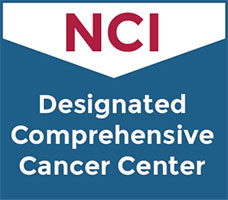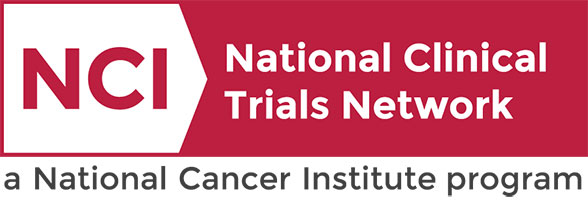Clinical Trials Search at Vanderbilt-Ingram Cancer Center
Genetic Testing to Select Therapy for the Treatment of Advanced or Metastatic Kidney Cancer, OPTIC RCC Study
Kidney (Renal Cell)
Kidney (Renal Cell)
This phase II trial tests whether using genetic testing of tumor tissue to select the optimal treatment regimen works in treating patients with clear cell renal cell (kidney) cancer that has spread to other places in the body (advanced or metastatic). The current Food and Drug Administration (FDA)-approved regimens for advanced kidney cancer fall into two categories. One treatment combination includes two immunotherapy drugs (nivolumab plus ipilimumab), which are delivered by separate intravenous infusions into a vein. The other combination is one immunotherapy drug (nivolumab infusion) plus an oral pill taken by mouth (cabozantinib). Nivolumab and ipilimumab are "immunotherapies" which release the brakes of the immune system, thus allowing the patient's own immune system to better kill cancer cells. Cabozantinib is a "targeted therapy" specifically designed to block certain biological mechanisms needed for growth of cancer cells. In kidney cancer, cabozantinib blocks a tumor's blood supply. The genetic (DNA) makeup of the tumor may affect how well it responds to therapy. Testing the makeup (genes) of the tumor, may help match a treatment (from one of the above two treatment options) to the specific cancer and increase the chance that the disease will respond to treatment. The purpose of this study is to learn if genetic testing of tumor tissue may help doctors select the optimal treatment regimen to which advanced kidney cancer is more likely to respond.
Kidney (Renal Cell)
II
Rini, Brian
NCT05361720
VICCURO21103
TPIV100 and Sargramostim for the Treatment of HER2 Positive, Stage II-III Breast Cancer in Patients With Residual Disease After Chemotherapy and Surgery
This phase II trial studies how well TPIV100 and sargramostim work in treating patients with HER2 positive, stage II-III breast cancer that has residual disease after chemotherapy prior to surgery. It also studies why some HER2 positive breast cancer patients respond better to chemotherapy in combination with trastuzumab and pertuzumab. TPIV100 is a type of vaccine made from HER2 peptide that may help the body build an effective immune response to kill tumor cells that express HER2. Sargramostim increases the number of white blood cells in the body following chemotherapy for certain types of cancer and is used to alert the immune system. It is not yet known if TPIV100 and sargramostim will work better in treating patients with HER2 positive, stage II-III breast cancer.
Not Available
II
Not Available
NCT04197687
VICCBRE2241
Split Course Adaptive Radiation Therapy With Pembrolizumab With/Without Chemotherapy for Treating Stage IV Lung Cancer
Multiple Cancer Types
This phase I/II trial tests the safety and efficacy of split-course adaptive radiation therapy in combination with immunotherapy with or without chemotherapy for the treatment of patients with stage IV lung cancer or lung cancer that that has spread to nearby tissue or lymph nodes (locally advanced). Radiation therapy is a standard cancer treatment that uses high energy rays to kill cancer cells and shrink tumors. Split-course adaptive radiation therapy uses patient disease response to alter the intensity of the radiation therapy. Immunotherapy with monoclonal antibodies such as pembrolizumab, ipilimumab, cemiplimab, atezolizumab or nivolumab may help the body's immune system attack the cancer, and may interfere with the ability of tumor cells to grow and spread. Chemotherapy drugs like carboplatin, pemetrexed, and paclitaxel work in different ways to stop the growth of cancer cells, either by killing the cells, by stopping them from dividing, or by stopping them from spreading. Giving split-course adaptive radiation therapy with standard treatments like immunotherapy and chemotherapy may be more effective at treating stage IV or locally advanced lung cancer than giving them alone.
Lung,
Non Small Cell,
Phase I
I/II
Osmundson, Evan
NCT05501665
VICCTHOP2185
A Study to Test Long-term Treatment With Brigimadlin in People With Solid Tumours Who Took Part in a Previous Study With This Medicine
Miscellaneous
Miscellaneous
This study is open to adults with solid tumours who received at least 4 cycles of treatment with brigimadlin in a previous study. The goal of this study is to find out how well people with solid tumours tolerate long-term treatment with brigimadlin. Brigimadlin is a so-called MDM2 inhibitor that was being developed to treat cancer.
All participants take brigimadlin as tablets once every 3 weeks at the study site. At study visits, doctors check participants' health and take note of any unwanted effects. At some study visits, doctors also check the size of the tumour and whether it has spread to other parts of the body. Participants are in the study as long as they benefit from treatment and can tolerate it.
All participants take brigimadlin as tablets once every 3 weeks at the study site. At study visits, doctors check participants' health and take note of any unwanted effects. At some study visits, doctors also check the size of the tumour and whether it has spread to other parts of the body. Participants are in the study as long as they benefit from treatment and can tolerate it.
Miscellaneous
II
Keedy, Vicki
NCT06619509
VICCSAR24625
Testing the Addition of 131I-MIBG or Lorlatinib to Intensive Therapy in People With High-Risk Neuroblastoma (NBL)
This phase III trial studies iobenguane I-131 or lorlatinib and standard therapy in treating younger patients with newly-diagnosed high-risk neuroblastoma or ganglioneuroblastoma. Radioactive drugs, such as iobenguane I-131, may carry radiation directly to tumor cells and not harm normal cells. Lorlatinib may stop the growth of tumor cells by blocking some of the enzymes needed for cell growth. Giving iobenguane I-131 or lorlatinib and standard therapy may work better compared to lorlatinib and standard therapy alone in treating younger patients with neuroblastoma or ganglioneuroblastoma.
Not Available
III
Not Available
NCT03126916
COGANBL1531
Testing Olaparib for One or Two Years, With or Without Bevacizumab, to Treat Ovarian Cancer
Multiple Cancer Types
This phase III trial compares the effect of olaparib for one year versus two years, with or without bevacizumab, for the treatment of BRCA 1/2 mutated or homologous recombination deficient stage III or IV ovarian cancer. Olaparib is a polyadenosine 5'-diphosphoribose polymerase (PARP) enzyme inhibitor and may stop the growth of tumor cells by blocking some of the enzymes needed for cell growth. Bevacizumab is in a class of medications called antiangiogenic agents. It works by stopping the formation of blood vessels that bring oxygen and nutrients to tumor. This may slow the growth and spread of tumor. Giving olaparib for one year with or without bevacizumab may be effective in treating patients with BRCA 1/2 mutated or homologous recombination deficient stage III or IV ovarian cancer, when compared to two years of olaparib.
Gynecologic,
Ovarian
III
Crispens, Marta
NCT06580314
NRGGYNGY036
A Phase 1/1b Study of IAM1363 in HER2 Cancers
Miscellaneous
Miscellaneous
This is a Phase 1/1b open-label, multi-center dose escalation and dose optimization study designed to evaluate the safety and preliminary efficacy of IAM1363 in participants with advanced cancers that harbor HER2 alterations.
Miscellaneous
I
Kennedy, Laura
NCT06253871
VICCPHI24527
Testing the Use of Ado-Trastuzumab Emtansine Compared to the Usual Treatment (Chemotherapy With Docetaxel Plus Trastuzumab) or Trastuzumab Deruxtecan for Recurrent, Metastatic, or Unresectable HER2-Expressing Salivary Gland Cancers
Head/Neck
Head/Neck
This phase II trial compares the effect of usual treatment of docetaxel chemotherapy plus trastuzumab, to ado-emtansine (T-DM1) in patients with HER2-postive salivary gland cancer that has come back (recurrent), that has spread from where it first started (primary site) to other places in the body, or cannot be removed by surgery (unresectable). This trial is also testing how well trastuzumab deruxtecan works in treating patients with HER2-low recurrent or metastatic salivary gland cancer. Trastuzumab is a form of targeted therapy because it works by attaching itself to specific molecules (receptors) on the surface of cancer cells, known as HER2 receptors. When trastuzumab attaches to HER2 receptors, the signals that tell the cells to grow are blocked and the cancer cell may be marked for destruction by body's immune system. Trastuzumab emtansine contains trastuzumab, linked to a chemotherapy drug called emtansine. Trastuzumab attaches to HER2 positive cancer cells in a targeted way and delivers emtansine to kill them. Trastuzumab deruxtecan is a monoclonal antibody called traztuzumab, linked to a chemotherapy drug called deruxtecan. Trastuzumab is a form of targeted therapy because it attaches to specific molecules (receptors) on the surface of cancer cells, known as HER2 receptors and delivers deruxtecan to kill them. Docetaxel is in a class of medications called taxanes. It stops cancer cells from growing and dividing and may kill them. Trastuzumab emtansine may work better compared to usual treatment of chemotherapy with docetaxel and trastuzumab or trastuzumab deruxtecan in treating patients with recurrent, metastatic or unresectable salivary gland cancer.
Head/Neck
II
Choe, Jennifer
NCT05408845
NRGHN010
A Randomized Study of ASTX727 With or Without Iadademstat in Advanced Myeloproliferative Neoplasms (MPNs)
Leukemia
Leukemia
This phase II trial compares the effect of ASTX727 in combination with iadademstat to ASTX727 alone in treating patients with accelerated or blast phase Philadelphia chromosome negative myeloproliferative neoplasms (MPNs). ASTX727 is a combination of two drugs, cedazuridine and decitabine. Cedazuridine is in a class of medications called cytidine deaminase inhibitors. It prevents the breakdown of decitabine, making it more available in the body so that decitabine will have a greater effect. Decitabine is in a class of medications called hypomethylation agents. It works by helping the bone marrow produce normal blood cells and by killing abnormal cells in the bone marrow. Iadademstat may stop the growth of tumor cells by blocking some of the enzymes needed for cell growth. Giving ASTX727 in combination with iadademstat may be more effective than ASTX727 alone in treating patients with accelerated or blast phase Philadelphia chromosome negative MPNs.
Leukemia
II
Kishtagari, Ashwin
NCT06661915
ETCHEM10675
Self-Management for Head and Neck Lymphedema and Fibrosis [PROMISE Trial]
Head/Neck
Head/Neck
The goal of this study is to evaluate the effectiveness of a standardized lymphedema and fibrosis self-management program (LEF-SMP) to improve LEF self-management and reduce LEF-associated symptom burden, functional deficits, and improve quality of life in head and neck cancer (HNC) survivors.
Head/Neck
N/A
Murphy, Barbara
NCT06125743
VICC-EDHAN23569


